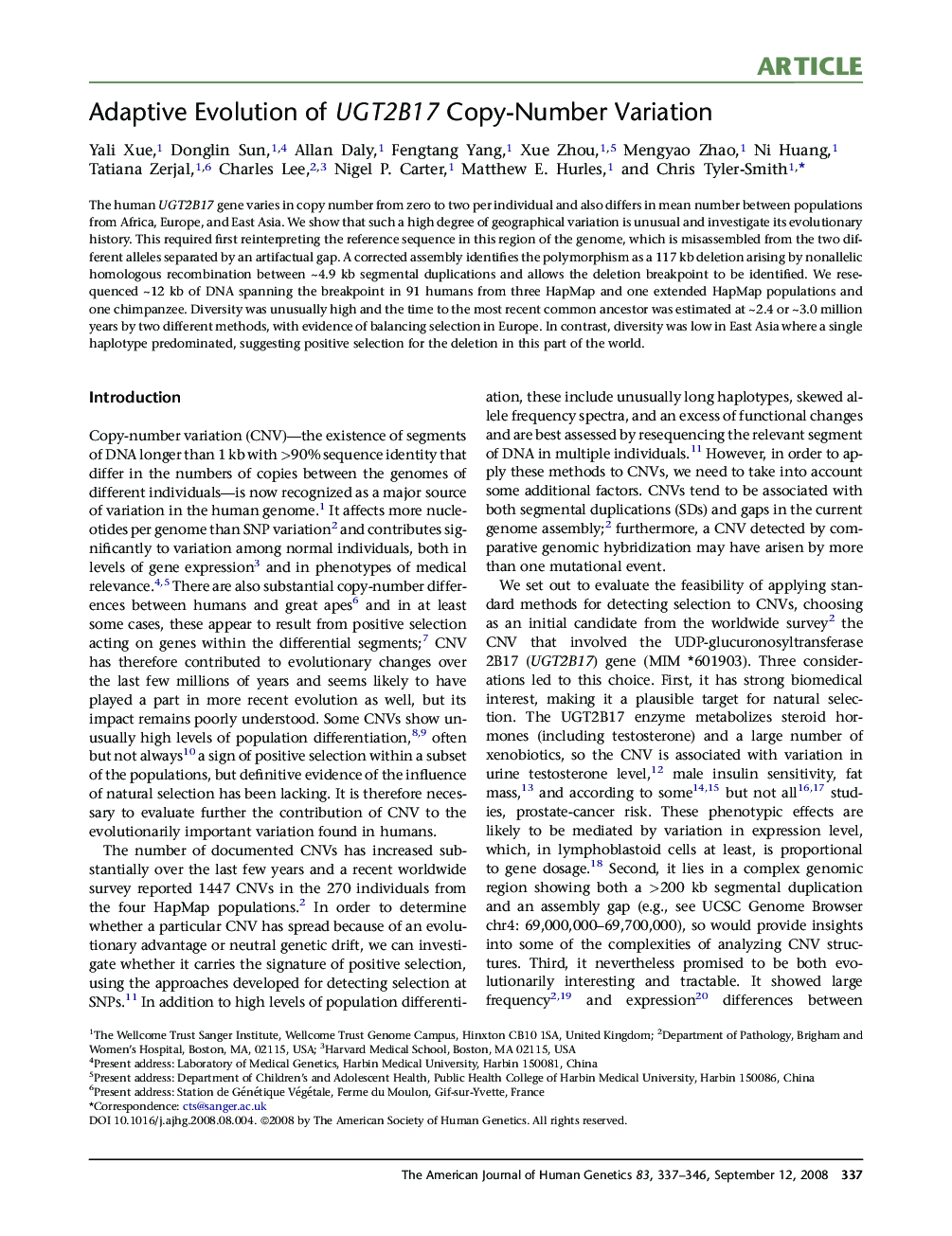| Article ID | Journal | Published Year | Pages | File Type |
|---|---|---|---|---|
| 2812006 | The American Journal of Human Genetics | 2008 | 10 Pages |
The human UGT2B17 gene varies in copy number from zero to two per individual and also differs in mean number between populations from Africa, Europe, and East Asia. We show that such a high degree of geographical variation is unusual and investigate its evolutionary history. This required first reinterpreting the reference sequence in this region of the genome, which is misassembled from the two different alleles separated by an artifactual gap. A corrected assembly identifies the polymorphism as a 117 kb deletion arising by nonallelic homologous recombination between ∼4.9 kb segmental duplications and allows the deletion breakpoint to be identified. We resequenced ∼12 kb of DNA spanning the breakpoint in 91 humans from three HapMap and one extended HapMap populations and one chimpanzee. Diversity was unusually high and the time to the most recent common ancestor was estimated at ∼2.4 or ∼3.0 million years by two different methods, with evidence of balancing selection in Europe. In contrast, diversity was low in East Asia where a single haplotype predominated, suggesting positive selection for the deletion in this part of the world.
